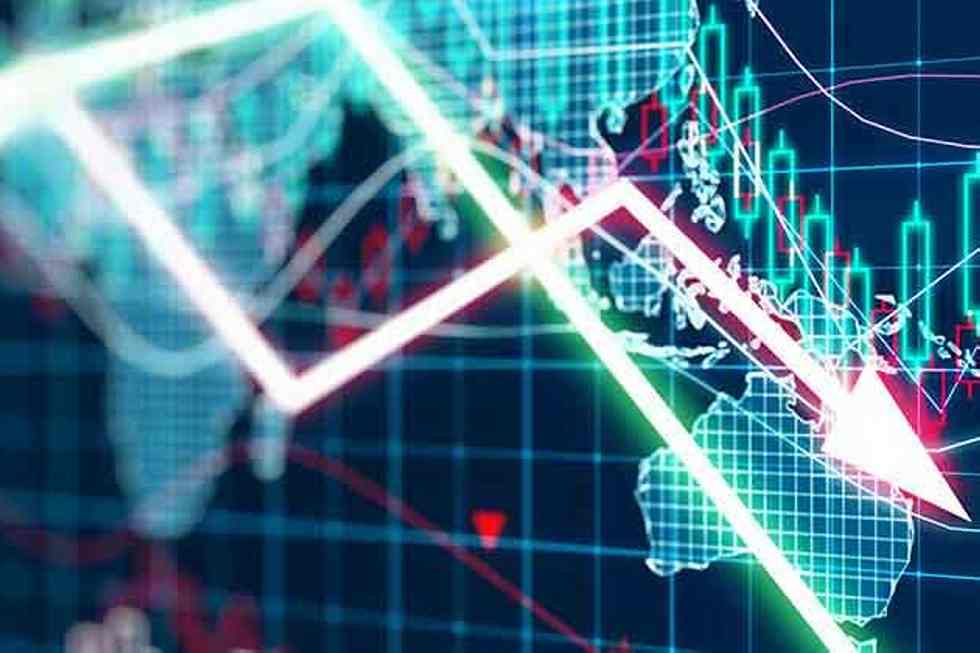The latest inventory market crash brought on by the COVID-19 world pandemic acquired us considering, what different inventory markets crash have occurred and what precipitated them?
When the inventory market crashes it will probably typically be tough to outline precisely what precipitated the downturn. It’s hardly ever ever black and white. Nevertheless, there are some key components that can typically have a component to play when there’s a dip available in the market. We’ve taken a web page out of the historical past books and explored 4 of the largest market crashes from the previous century and why they occurred.
Black Thursday, 1929
Key components: Hypothesis and expectation, shopping for on margin, agricultural sector failing
Down by: 83.4%
Arguably probably the most well-known of inventory market crashes, Black Thursday that finally led to the Nice Melancholy left many countries all over the world in a state of despair for over ten years. Australia was not proof against the market droop, which noticed our financial system collapse and, on the peak of the Nice Melancholy, unemployment rise to 32%.
There have been quite a few components that contributed to the Wall St crash of 1929. Throughout the ‘roaring twenties’ the inventory market noticed fast enlargement and folks from all walks of life started placing their financial savings into shares deeming it to be a protected guess. The hypothesis was harmful, however what made it worse was the rising variety of folks shopping for shares on margin. Shopping for on margin meant that the investor solely wanted 10-20% of their very own cash to purchase a inventory and the rest they usually borrowed from a dealer. If a inventory worth fell decrease than the mortgage the dealer would seemingly concern a ‘margin name’ requiring the investor to repay the mortgage instantly.
Associated articles: 3 Frequent Errors Buyers Make Throughout A Downturn
Concurrently, the agricultural sector was struggling because of falling meals costs and drought, shopper debt was on the rise and banks had an extra of enormous loans that might not be liquidated. Regardless of all this, inventory costs continued to rise. On 29 October, 1929, now often called ‘Black Thursday’ traders started promoting overpriced shares en masse resulting in the crash. On Black Thursday 12.9 million shares had been traded, 3 times the traditional quantity.
As soon as shares started falling market sentiment and confidence adopted go well with. This precipitated traders to withdraw their cash from the banks and with much less cash in provide the more serious the consequences of the crash turned.
Black Monday, 1987
Key components: Computerised buying and selling, hostility within the Persian Gulf and a five-year ‘bull market’ with none corrections
Down by: 29.6%
The Eighties was a decade outlined by the mantra ‘Greed is sweet’ however that bullishness got here to a fairly abrupt finish with the market crash of 1987. On 19 October, 1987 (now often called Black Monday) the Dow Jones fell 22.6% – the worst plunge ever.
The preliminary explanation for the crash has been attributed by some to the computerised buying and selling that allowed for ‘cease loss orders’, which had been in abundance on the time. Cease loss orders, is the apply of promoting a inventory as soon as it reached a sure worth. It’s designed to restrict an investor’s losses. This apply started to liquidate shares as quickly as loss targets had been hit. With so many cease loss orders in play, they concurrently purchased the value of shares down. This coupled with heightened hostility within the Persian Gulf, which additional lowered market sentiment, resulted within the greatest one-day share crash in historical past – a recorded nonetheless unsurpassed at present.
After the Black Monday crash circuit breakers are designed to restrict panic promoting by briefly stopping buying and selling on a specific inventory or securities as soon as it reaches a pre-determined level.
The Dot Com Bubble, 2000
Key components: Hypothesis and expectation
Down by: 44.7%
The Dot Com Bubble started in 1997, on the again of a robust and regular decade on the inventory market, and burst in 2000. Many have attributed the creation of this bubble to the rise of the web and subsequently web corporations. Buyers had been so excited by the brand new know-how and the potential of the web that many started to purchase into any and all tech corporations. Buyers at the moment had been complacent, seeming to disregard whether or not or not an organization was worthwhile or would finally turn out to be worthwhile.
With investments and loads of pleasure, the worth of tech shares started to develop. On the peak of the bubble the value of many tech shares had been vastly over-inflated. The bubble did finally pop in 2000 when quite a few main tech corporations positioned enormous promote orders on their shares, sparking panic promoting amongst traders. This crash resulted 130 web corporations folding and eight,000 job losses. It’s a poignant reminder to traders to at all times do your analysis and don’t simply observe the traits!
The GFC, 2008
Key components: Lack of laws, credit score crunch, provide and demand
Down by: 50.9%
How the World Monetary Disaster (GFC) got here into being may be fairly difficult and convoluted as a result of frankly the entire thing was relatively dodgy. Basically, it may be put all the way down to unscrupulous lending.
This market crash is usually perceived to have been generated by the US housing market and particularly sub-prime mortgages. A sub-prime mortgage is a mortgage supplied to debtors with low credit score scores and sometimes granted with no down fee or proof of revenue required. These dangerous mortgages had been handed out by banks as a result of massive funding companies had been keen to purchase them.
As increasingly house house owners defaulted on their loans the availability for homes went up and demand fell. This precipitated property values within the US to say no considerably. Concurrently, banks who had been handing out these loans fell into larger and larger debt. Funding companies who had additionally purchased a few of these loans had been holding a ticking time bomb and commenced to break down, the primary of which was Lehmann Brothers who filed for chapter in 2008. Basically, this credit score crunch, of exponential proportion severely shook market confidence and resulted in a global market downturn.
Need to be taught extra concerning the GFC? Try this text, or alternatively watch The Huge Brief (sensible film!).
‘Those that don’t be taught historical past are doomed to repeat it.’
Understanding the components which have the flexibility to affect the market ought to present larger consciousness on how the inventory market works and, in some instances, the way it doesn’t work. Though, it’s value noting that regardless of the borderline astronomical crashes that came about (okay, a slight exaggeration) the market has bounced again. What this may imply for many who are in it for the lengthy haul is chances are you’ll wish to breathe a sigh of reduction understanding that typically the market does get better. For brief time period traders, it means that you could be wish to hold your ear to the bottom and a watchful eye on market actions and traits.
Fortunately, Canstar Investor Hub may be your eyes and ears with all issues funding associated. You’ll be able to observe us on Fb and Twitter.












Leave a Reply